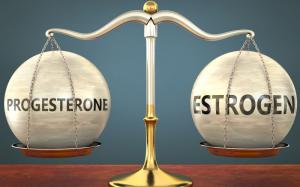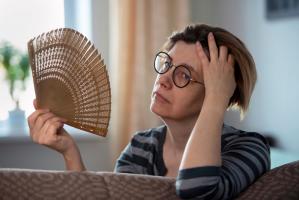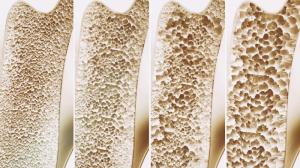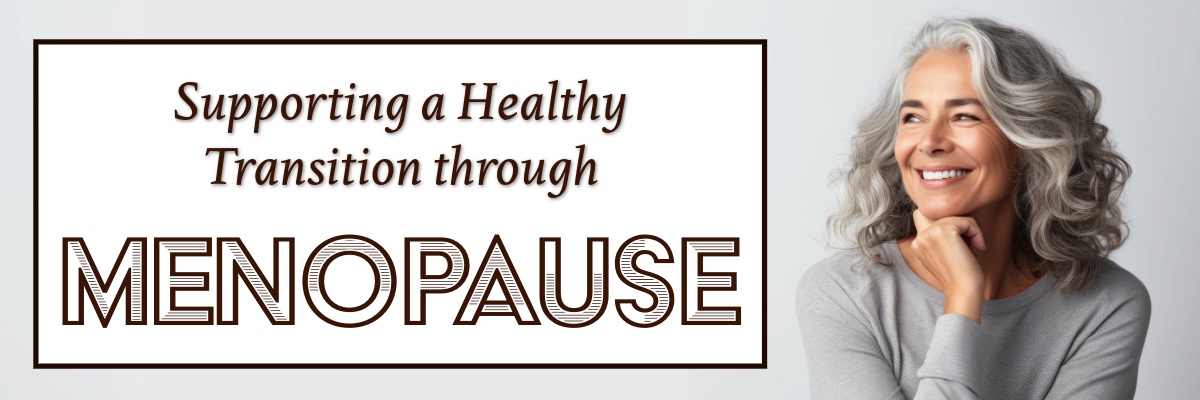
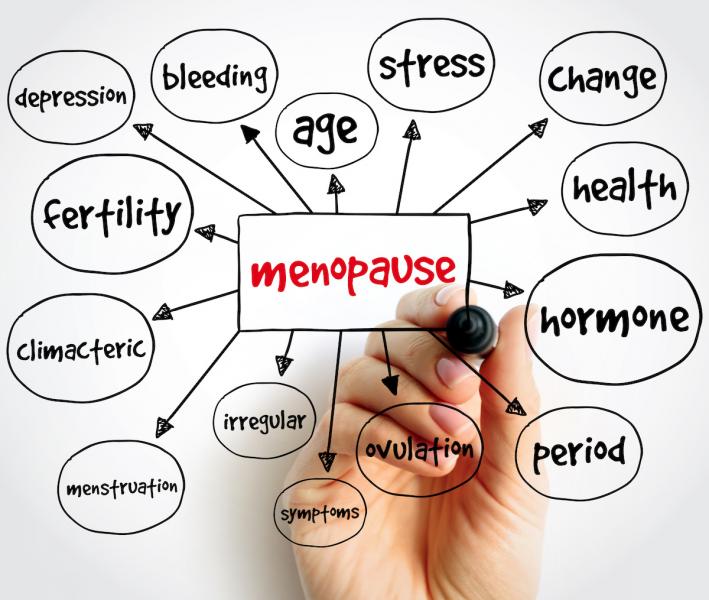 Each year, about 1.3 million women enter menopause, the season of life when their monthly periods cease. This normal transition, which happens to every menstruating woman, typically occurs between the late forties or early fifties. Once a woman has not had a period for a year, she is considered postmenopausal. During the time prior to menopause, known as perimenopause, changes to periods and general health can occur due to declining levels of the sex hormones estrogen and progesterone.
Each year, about 1.3 million women enter menopause, the season of life when their monthly periods cease. This normal transition, which happens to every menstruating woman, typically occurs between the late forties or early fifties. Once a woman has not had a period for a year, she is considered postmenopausal. During the time prior to menopause, known as perimenopause, changes to periods and general health can occur due to declining levels of the sex hormones estrogen and progesterone.
During perimenopause, menopause, and postmenopause, women may experience various symptoms. Three quarters of all women experience hot flashes at some point. Other common menopausal symptoms include weight gain, thinning hair, irregular periods, insomnia, vaginal dryness, and night sweats. Women may also experience emotional symptoms such as anxiety, depression, or irritability. After menopause many women will also start to experience bone loss (osteoporosis).
Over 60% of women with menopause symptoms report that they are severe enough to interfere with their quality of life. As a result of these changes many women will resort to hormone replacement therapy, taking synthetic hormones to try to control these symptoms. Since menopause is a natural transition, there may be some issues with artificially boosting hormones, when they’re naturally meant to decline, and there are potential side-effects and risks to this approach.
Fortunately, there are natural ways women can make this major life transition easier. Changes in diet, herbs, and supplements can all help to reduce symptoms and maintain health through perimenopause and into postmenopause. We’ll cover some of these natural supports for this change of life in this issue of Sunshine Sharing.
Blame it on Hormones
When it comes to menopause, you can blame it on hormones, because it is hormonal changes that create the physiological and psychological shifts a that occur during menopause. Specifically it is the decline in production of estrogen and progesterone as shown on the right. To understand how you can support a healthy transition, you need to understand more about these two major hormones.
Understanding Estrogen and Progesterone
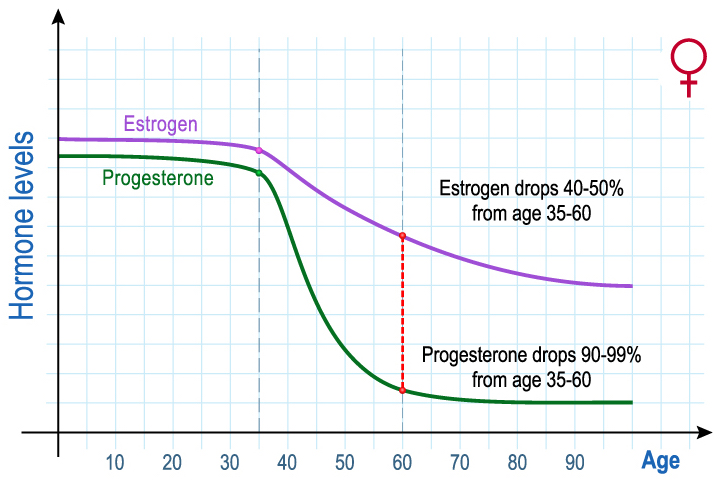 Estrogen is the hormone that creates feminine characteristics, just like testosterone creates male characteristics. However, estrogen is not a single compound. There are several forms of it. The one responsible for fertility during child-bearing years is estradiol (E2). Production of E2 begins at puberty and drops off dramatically after menopause.
Estrogen is the hormone that creates feminine characteristics, just like testosterone creates male characteristics. However, estrogen is not a single compound. There are several forms of it. The one responsible for fertility during child-bearing years is estradiol (E2). Production of E2 begins at puberty and drops off dramatically after menopause.
E2 is primarily produced in a maturing follicle under the influence of the follicle-stimulating hormone (FSH). Although small amounts of E2 are produced by the adrenal glands, fat cells, breast tissue, and liver, E2 production drops off sharply at menopause.
E2 plays an important role in many body processes besides reproductive functions. It aids bone development and affects collagen production. This is why the loss of E2 will cause skin problems like wrinkles and dryness. E2 also influences cholesterol levels, blood sugar levels, circulation, and brain function.
In fact, estrogens play a role in about 400 functions of the body. So, it’s easy to see why declining levels of estrogen during and after menopause result in a variety of changes in levels of health.
Other Forms of Estrogen
However, there are other forms of estrogen that were produced before puberty that continue to be produced after menopause. Having good production of these estrogens makes menopause easier.
E1 is the main form of estrogen produced after menopause. It can be formed in the adrenal glands, liver and fat cells, as well as the ovaries. Therefore, having healthy liver and adrenal gland function will make menopause easier.
E3 is a milder estrogen that does not stimulate the breast tissue or uterine lining like E1 and E2 do. Because of this E3 protects the intestinal tract, vaginal lining and the breasts. Asian and vegetarian women have higher levels of E3 and lower rates of breast cancer. These diets are higher in plant estrogens known as phytoestrogens.
There are also chemicals that mimic estrogen. This includes synthetic estrogens used as drugs and in animal feed to increase milk and egg production. There are also pesticides that mimic estrogen and estrogen mimics are also found in some plastics. These chemicals are known as xenoestrogens, and they mimic the stronger forms of estrogen E1 and E2, which increases risk of breast cancer and other health problems after menopause. So, avoiding these xenoestrogens and increasing phytoestrogen intake will aid in creating a healthy transition.
Progesterone
The drop in progesterone is much larger than the drop in estrogen during perimenopause and menopause. This is because large amounts of progesterone are produced by the follicle after the egg is released. So, once ovulation ceases, levels of progesterone are also lower.
This reduction in progesterone affects many body processes. Progesterone plays a role in skin elasticity and bone strength. It has anti-inflammatory and antispasmodic actions and plays a role in blood sugar regulation. Lower levels of progesterone due to menopause may contribute to hot flashes, mood changes (anxiety or depression), loss of libido, difficulty sleeping, weight gain, and breast pain.
Additional Resources
- The Herbal Menopause Book by Amanda McQuade Crawford
- The Wisdom of Menopause by Christine Northrup, MD
- Strategies for Health by Steven Horne
Become a Member
Steven Horne's monthly member program is a way for you to get great information about herbs and natural healing to build your herbal business. Including the ability to share issues of Sunshine Sharing like this one. Click here to learn more.
